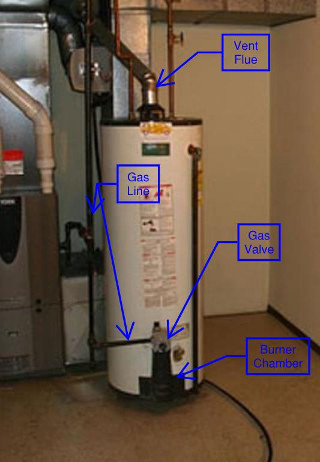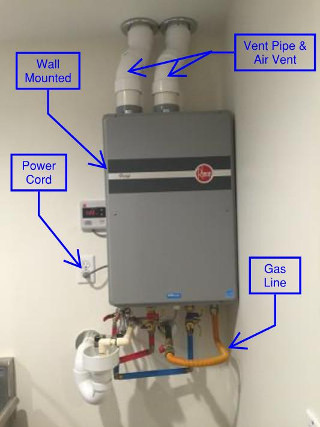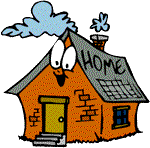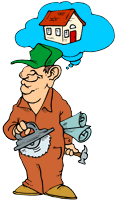Uncategorised
Types of Hot Water Heaters
Do you know what type of hot water heater that have? Or are you considering a new hot water heater and you want to compare the different types? Either way this article provides valuable information that helps you to identify and compare the various types of hot water heaters that are available on the market.
Do you have a water heater that is not working properly? See the articles 'Troubleshooting Gas Hot Water Heater Problems' or 'Troubleshooting Electric Hot Water Heater Problems' for information on how to solve your problem. Not sure what type of water heater that you have, no problem, review the information below before you proceed.
Electric Hot Water Heaters
Standard Electric Hot Water Heaters
 A standard electric hot water heater has some of the same characteristics that all water heaters have. However, they are simpler than their gas fired cousins, so they have fewer distinctive features. So do identify one, you are looking more for what they don't have instead of what the do have. See the descriptions for Gas Water Heaters below for some of the distinctive gas water heater features. Look for these features to see if your water heater is electric.
A standard electric hot water heater has some of the same characteristics that all water heaters have. However, they are simpler than their gas fired cousins, so they have fewer distinctive features. So do identify one, you are looking more for what they don't have instead of what the do have. See the descriptions for Gas Water Heaters below for some of the distinctive gas water heater features. Look for these features to see if your water heater is electric.
Electrical Hook Up - This is generally a conduit, usually flexible that is attached to the top of the water heater. It is not a regular cord that plugs into an outlet. Most water heaters run on a 50 amp 220/240 volt circuit, so the wiring is heavy duty.
Access Panels - Electric water heaters use 'heating elements' to heat the water. These have electrical terminals that attached to the element that extends inside of the tank. Most water heaters will have two elements. On the side of the water heater you will find two access panels that are attached with screws.
No Gas Line or Gas Valve - Unlike a gas water heater, the electrical supply line is all that is needed. So you won't find a gas line attached to the unit.
No Vent Flue - Electric water heaters do not have any exhaust, so there is no need for a vent flue, plastic or metal.
High Efficiency Electric Hot Water Heaters
High efficiency electric hot water heaters use technology that is similar to a heat pump. As a result, the unit will have a heat exchanger on top of the unit that acts much the same way the heat exchanger works for a heat pump. These units are generally called hybrids in that they use both heating elements and the heat exchanger. Look for some of these features:
- Electrical Supply Line - A heavy duty electrical supply line will be attached to the unit.
- Access Panels - Access panels for the heating elements will be present.
- Heat Exchanger - The heat exchanger is a separate component, but it may appear to be built right into the unit. The heat exchanger will be on top of the water heater and have a blower fan built in.
Tank-less or Inline Electric Hot Water Heaters
Tank-less electric water heaters are much smaller than a standard model. They are normally mounted on the wall and have a clean simple look. You will notice a few things when you see one:
- Electrical Hook Up - Tank-less electric water heaters have a conduit or flexible electrical connection. This is not a cord, instead it is similar to the connection on a range or other heavy duty electrical appliance.
- No Vent Flue - Electric water heaters of this type do not require a vent flue, since no exhaust is generated.
- Wall Mounted - Due to the small size, this type of unit is normally mounted on the wall.
Gas Hot Water Heaters
Standard Gas Hot Water Heaters
 A standard gas hot water heater is fairly easy to identify. It has a few tell tale features that distinguish it from other type. See the following list for the unique features:
A standard gas hot water heater is fairly easy to identify. It has a few tell tale features that distinguish it from other type. See the following list for the unique features:
- Vent Flue - At the top of the water heater there will be a hood that is attached to a 3" or 4" round flue pipe. Standard gas water heaters have 'Hot' exhaust that must be vented into a chimney.
- Gas Line - A gas supply line runs to the unit that usually has a shut off valve in it. This line attaches to the unit near the bottom at the 'Gas Valve'. Normally this line will be a 'black' metal pipe, but it can be other materials.
- Gas Valve - The gas valve is a distinctive looking mechanism that regulates the flow of gas and allows for the lighting of a pilot light. This valve is located near the bottom of the water heater.
- Burner Chamber - A gas water heater has an area at the bottom of the unit where the gas is burned and the water tank is heated. There is usually a small view window or a removable cover that allows for inspection of either the pilot light or the burner itself. If the unit is working properly, a flame or the pilot light should be visible.
- Non Electrical - A standard gas water heater does not require any electricity to operate. So there is no cord or electrical connection.
Power Vent Gas Hot Water Heaters
Power Vent gas water heaters are very similar to standard gas water heaters. The main difference is that it has a fan housing on the top of the unit that forces the exhaust out of a non-vertical vent pipe. These units are used when a standard vertical chimney is not available. Look for these features on a power vent water heater:
- Vent Flue - May be horizontal or a long distance to a vertical chimney.
- Gas Line - Same as a standard gas water heater.
- Gas Valve - Same as a 'standard' gas water heater.
- Burner Chamber - Same a s 'standard' gas water heater.
- Electrical Hookup - A power vent water heater uses a 115 volt power cord to operate. It would normally plug into a standard outlet, although this should be hooked up to a dedicated circuit.
High Efficiency Gas Hot Water Heaters
'High' efficiency gas water heaters may look quite similar to a 'standard' gas water heater. This is due to the fact that they have all of the same equipment requirements, with the possible exception of the type of flue. Unfortunately, the term 'High' can be applied to any water heater that is felt to be a higher efficiency than a standard version. So, the only difference might be additional insulation around the tank.
A true or optimal 'high efficiency' gas hot water heater will have a secondary heat exchanger that extracts additional btu's from the hot exhaust that a gas water heater normally produces. When this technology is employed, the exhaust is cool and the vent can be plastic pipe that can either go horizontally or vertically.
Look for these features on a High Efficiency gas water heater:
- Vent Flue - The vent could be metal or plastic and run either vertically or horizontally or a combination of both.
- Gas Line - This type of water heater will definitely have a gas line running to the unit.
- Gas Valve - This type of unit will also have a gas valve, although it may be hidden in additional protective shrouds.
- Burner Chamber - This type of unit will have a burner chamber, however it may not be as accessible as a standard unit.
- Electrical Hookup - Depending on the level of efficiency, this type of unit can have an electrical hook up. Very high efficiency units need to run impellers to keep the exhaust fumes and/or make up air moving, so electricity is required.
Tank-less or Semi Tank-less Gas Hot Water Heaters
 Tank-less or semi tank-less gas hot water heaters have a very different look than a standard or even a high efficiency gas water heater. First of all, they are a lot smaller and usually mounted on a wall. The reason for this is that the 'tank' that holds the hot water is the biggest feature of a standard water heater. Even if you have a semi tank-less unit, the tank is only a few gallons compared to 40-100 gallons for a conventional unit.
Tank-less or semi tank-less gas hot water heaters have a very different look than a standard or even a high efficiency gas water heater. First of all, they are a lot smaller and usually mounted on a wall. The reason for this is that the 'tank' that holds the hot water is the biggest feature of a standard water heater. Even if you have a semi tank-less unit, the tank is only a few gallons compared to 40-100 gallons for a conventional unit.
So a tank-less, or semi tank-less gas hot water heater will have the following features:
- Vent Flue - This style of water heater will have a vent. Most of the time it will be a plastic pipe that will run either vertically or horizontally or a combination of both. It may have an additional plastic line that supplies air for combustion.
- Gas Line - A gas line is required for this type of unit. Depending on the GPM (gallons per minute) of output, it may have a larger gas line.
- Gas Valve - This unit will have a gas valve, however, it is not generally visible on the outside of the unit.
- Burner Chamber - This unit will have a burner chamber, but it is generally only visible through a small view window on the front of the unit.
- Electrical Hookup - A Tank-less water heater will require electrical power. This is usually, a 115 volt standard outlet. Most units come with a cord attached.
- Wall Mounted -Since the units are small and don't weigh a lot, they are often mounted on a wall. There are several connections that need to be made at the bottom of the unit, so having them up off the ground makes sense.
There are lots of manufacturers out there with several styles for each type of water heater. So, it is impossible to list every identifying feature of every available unit. We hope that this quick list of descriptions will help you if you are unsure about what type of unit you have.
Dishwasher Troubleshooting Guide
Got problems with your dishwasher? We can help you to find a solution to your problem. This 'Troubleshooting Guide' helps you to determine your problem and find the best way to solve it.
There are a number of things that can go wrong with a dishwasher. They have a number of moving parts and they also use water. Yes, water, the stuff 'leaks' are made of. We have tried to identify many common problems below. Read the descriptions and determine which one seems to describe the trouble you are having.
The appliance may not be plugged in or the outlet might not be working. It is also possible that you have a blown fuse or a tripped circuit.
Another cause for the dishwasher not starting is damaged wiring. If any of the cords have been bent or had something heavy placed on them, it may cause breaks that are not visible to the naked eye.
The dishwasher door must be properly latched in order for the unit to start. If something is obstructing it or the latch has become bent, it will not start.
If you hear whining noises, it is possible that the motor or pump is damaged. Debris may be preventing it from functioning properly. Also, the internal drive belt could be damaged, worn out or have popped out of place.
Why won't my dishwasher fill up with water?
Whether it will not fill at all or the water begins to drain while the water is still going into the unit, this is a serious operational issue.
The water supply itself may not be connected well or it could have a leak in the lines leading to the appliance.
The fill lines that lead to your unit may have kinks or something on them that are preventing proper water flow.
The valves might not be opening or could have blockage that prevents water from getting through.
The inlet valve may not be working right. The door and float switches could also be experiencing continuity problems.
The drain valve arm may be stuck or the solenoid could be bad.
Why won't the water drain from my dishwasher?
The drain hose might have a kink or twist in it that prevents the water from flowing through it. If there is a heavy object on it or it has been smashed down previously, water flow can be stopped.
You may have motor or pump obstructions in the unit. Also, the drain valve, drive belt and hoses may have damage. Your timer motor could also be faulty.
Why is my dishwasher leaking?
This can be due to using the wrong type of soap. You may have faulty seals, gaskets or hinges. The various hoses and pumps could also be to blame.
Why are my dishes wet at the end of a complete cycle?
The heating element may be broken.
Why does my dishwasher have a funny odor?
This is usually caused by food somewhere in the machine. This can be trapped in a variety of places, including the filter.
Dishwasher troubleshooting will help you find the reason why your machine is malfunctioning. Once you determine the culprit for your problem, you can make arrangements to fix it so that you can keep your kitchen clean.
Dishwasher Not Cleaning Properly
A faulty dishwasher can be frustrating, getting a serviceman to repair it is expensive. If you are not a qualified technitian, you can still do it yourself since the procedure involved is not complex. Below is a lists of parts that you should consider troubleshooting or repairing to ensure a normal operation of your dishwasher.
Check the Spray Arm
If you are having problems that involve low pressure in the spray arms, the problem can be in the upper discharge housing gasket. It is positioned above the discharge cover above the circulation impeller. Replacing the gasket can be a remedy. When doing so, ensure that no debris is left behind that may make fitting the gasket tricky.
If the spray arm looses its normal flexibility and functionality, it could be obstructed by dishes limiting free movement. A wobbly spray arm and a rugged spray pattern can be realized, you need to inspect the spray’s for plugged holes or cracks. Debris like food, cellphones, glass and other foreign may be clogging of the spray arm. Inspecting the filter can also help. Crack and seams can also be the cause of failure of the spray arm, to improve its functionality; you should consider servicing the spray arm mounting bracket and ensure that it is not loose or cracked.
If your dishwasher has a middle spray- arm, and it is not operating well. You need to inspect the docking station including its flappers. The docking station is located at the rear of the dish washer. Its job is to feed water to the middle spray arm. Ensure that the flappers can freely move and will close successfully when this pray arm is not selected.
Clogged Diswasher Drains
If you are experiencing clogging of the draining system dirty water circulates in the dishwasher and can be reused in the dishwasher. The choppers can be faulty-they could not chopping food debris on the dishes. To eliminate this problem, you should inspect the draining pump and remove the food debris. If the choppers are damaged, then you need to replace them.
Water Inlet Valve
If your dishwasher not cleaning properly, the water inlet valve can be the problem. A faulty valve will not supply enough water to the tub, or no water is supplied at all. It is located in the anterior of the dishwasher behind the lower access panel. To correct this malfunction you need to inspect and ensure that it is not plugged and whether the vale is supplied with power during the fill portion of the circle. It can be inspected using a multi-meter. If it is not operating well, you should consider replacing it.
Checking the Water Delivery Tube
When your dishwasher cannot deliver enough cleaning water from the upper spray arm, the water delivery tube could be clogged. Ensure that the delivery arm is well aligned if it’s made up of plastic. Remove the debris if it is plugged or consider replacing it.
Misc Issues
When the food particles are clogging the spray arm, then the filters are torn. Consider replacing them.
If your wash spinner is not well mounted, cracked or not fixed well then, the dishes will not be coming out from the dishwasher. Ensure that the spinner is at liberty to spin.
Dishwasher Detergent
Your dishwasher not Cleaning properly? this can arise due to a faulty detergent dispenser or poor quality of the detergent is used. Utilize powdered detergents since they dissolve easily and ensure that the detergent cup is not clogged or plugged if your dishwasher is old. Consider replacing the faulty parts.
Dishwasher Heating Element
Poor operation of your dishwasher could be due to malfunctioning of the heating element. If hot water is not supplied, check the heating element below the dish washer. For your safety and to achieve clean dishes, ensure that the dishwasher heating element heats the water to a temperature range of 140-150 degrees Fahrenheit.
Dishwasher Water Pump
Poor pressure and water circulation can be a main problem in a dish washer. It can arise due to faulty pump impellers. They are located in the dish washer’s pump. Check for any fins or hubs, and consider replacing.
Home Repair Central
 Home Repair Central gives you the information you need to make most repairs in your home yourself. Some of the main topics are:
Home Repair Central gives you the information you need to make most repairs in your home yourself. Some of the main topics are:
Fixing Doors - Repair and adjust doors in your home. Exterior Doors, Garage Doors, Interior Doors and Closet Doors are discussed.
Repairing Drywall - Everything from and little ding in your wall to a big hole can be fixed.
Plumbing Repairs - Toilets, Sinks, Drains and Water Heaters are covered.
Electrical Repair - After you take precautions there is no reason you can't make simple electrical repairs in your home.
Why pay a repairman if it is simple to fix. There are many repairs that take less the fifteen minutes. Would you like to save $75 for 15 minutes of work?
You may as well accept the fact that there will be some cost and inconvenience, no matter what you do. The cost and inconvenience can be minimized.
Calling a repairman is not a pleasant thought. Someone will need to meet him. It may not be solved in a single visit. You will have to suffer through the sometimes condescending attitude of the technician.
You may be subjected to the 'hard sell' to replace the item. 'It may not last if I fix it', he says in tone that means a bigger check. Finally, you will probably be out one hundred to several hundred dollars for your trouble, not to mention the time missed from your job.
Find Out If You Can Take Care of it Yourself
It is my hope that you will never have to pay a hundred or more dollars for something you can do yourself. I worked for a plumbing contractor several years ago and made numerous service calls at people's homes. Many times I would be sent out to unstop a bathtub drain. I would take a screwdriver out of my back pocket, take out the strainer, and remove the hair and the drain would work fine. In the mid 70's the bill for that was forty dollars for two minutes work, not bad pay, when you can get it.
Home Repair Central is designed to help you decide if you are capable of repairing something yourself. Can you do it? How much could you save? Do i have the tools? How inconvenient will it be to the family, especially your spouse? Knowing your options will help you make an intelligent decision.
 I am not saying that you should never call a professional. What I am saying is that you need a professional far fewer times than the professionals would have you believe.
I am not saying that you should never call a professional. What I am saying is that you need a professional far fewer times than the professionals would have you believe.
I was on a website recently that said that 'garage door repairs' are best left to professionals. I guess it was a good thing I didn't read that before I repaired my own garage door.
Why should you pay exorbitant fees for simple tasks that you could easily perform yourself. With a little guidance and access to the right resources, you can make your own home repair.
How This Site Can Help You
Home Repair Central will provide you with the following help:

Quick easy assessments of whether or not a particular repair is practical. Is a Drywall Repair impossible for the average person? Can you make a simple Plumbing Repair? The "What Can You Save?", "How Hard Could It Be?", "Check the Simple Things First" and "What Could Go Wrong", segments will help you to quickly assess the feasibility of a repair. Look for the 'Yellow' highlights.
Step by step "How To" information to help you make the actual repair. We will try to include useful pictures that illustrate the repair being made.
Tools, sometimes, special tools may need to be rented or purchased.
Links to useful information, such as, manuals and manufacturer's websites.
Sage advice on timing. Some repairs are possible if the timing is right.
We are very glad you took the time to look at this website. We hope you find something useful here. Please come back and visit us again.
Door Repair
Why Replace a Door That Can Be Repaired? Can you make a door repair? Often the answer is yes, a few tools, some patience and you can get your doors working properly. Use this site to get the skills.
Garage Door Repair
Is This Something You Want to Try to Do Yourself? Making an Overhead Garage Door Repair, do you have the skills? There are several moving parts and the door is heavy, yet there are things you can do. Learn How!
Garage Door Spring Repair
When the Spring Breaks the Door Gets Heavy. Fix It! What do you need to know to make a garage door spring repair? It may not be the lock, could it be the door? It could be as simple as a little oil!
Interior Swinging Doors
Bedrooms, bathrooms, utility rooms, closets and other rooms all have swinging doors. These doors are lighter than their exterior cousins. However they can act up and require some attention. Wood doors are susceptible to changes in humidity. Learn what you need to know by reviewing this topic.
Closet Doors
Closet doors come in two common types. Bifold and sliding, the names are descriptive of the operation of the door. These doors can vary in quality and the hardware needs to be replaced over time. Check out all the closet door issues in this section.
Pocket Doors
Pocket doors are the ones that disappear into the wall. They are great when space is tight. They use different hardware and the inside of the pocket is hard to access. So they have some unique problems. This topic covers the issues and problems.
Exterior Doors
Exterior doors keep intruders and the elements out of your home. This means they are made of heavier construction and the locks have to be of better quality. In addition, weatherstripping is needed to keep out the hot and cold.
Drywall Repair
Tips and Techniques for Repairing Drywall in Your Home. Do you know how to repair drywall? Why pay someone when it is not that difficult. Learn what you need to know the repair any drywall problem in your home.
Drywall Patching
Whether it is a small crack or a large hole in your wall, the reality is that it will need some patching and repair. Size does matter when it comes to a drywall repair, so the articles deal with various levels of patching. At the small end, you may need to spackle a small ding in the wall before you paint. At the large end, someone may have put their foot through the ceiling when they were getting something out of the attic. These items and everything in between are covered in this segment.
Electrical Repair
Keep the Current Flowing and Your Home Functioning! So many things use electricity. Home electrical repair is a fact of life. Learn the skills and precautions you need to take to make your own repairs.
Ceiling Fans
Ceiling fans come in all shapes and sizes. Some have lights, other are just fans. They can be wired differently and they can have several settings. Anything with that many moving parts is a candidate for repair issues. See what can be fixed and how hard it is.
Doorbells
There are basically two different types of doorbells. Wired units are hooked to your homes power supply. Wireless units rely on batteries to work. There are advantages to both types. The problems that may require repair differ between the two styles.
Electrical Wiring
Just about everything in your home that uses electricity has some type of wiring. When is wiring a problem? When is it advisable to try and repair an electrical device or the wiring going to it? Is it too dangerous to attempt it yourself? Several subjects are covered in the wiring segment. Questions are answered and instructions are provided.
Plumbing Repair
Which plumbing repairs can you make yourself? It is easy to make your own home plumbing repair. You can save money and time if you do it yourself. Find out which plumbing repairs make sense for you to try.
Plumbing Drains
One of the key jobs that your plumbing system takes care of is getting rid of unwanted water. The drains in your home perform this lowly task. Leaks and clogs are two common problems for drains. Can you fix them yourself? Yes, as long as you are armed with the right information.
Garbage Disposals
A garbage disposal is both an electrical and a plumbing device. Most people consider them an integral part of a modern kitchen. Most of the problems with garbage disposals can be fixed without too much difficulty and common tools. Find out what you need to know.
Toilets
The toilets in your home perform a dirty and much needed function. When functioning properly, they effectively remove unwanted waste from the home gracefully. When they are not working, you can have a real mess on your hands. Dealing with toilet issues is an easy way for a homeowner to save on repair bills. Learn what you need to know by checking out this section
Hot Water Heaters
This is another important item that involves more than one type of technology. Getting water in and out of the tank involves plumbing issues. Gas lines are another plumbing problem. Heating water with electricity is a unique concept. Keeping the two of them separated is very important. Find out about water heaters in this section.



